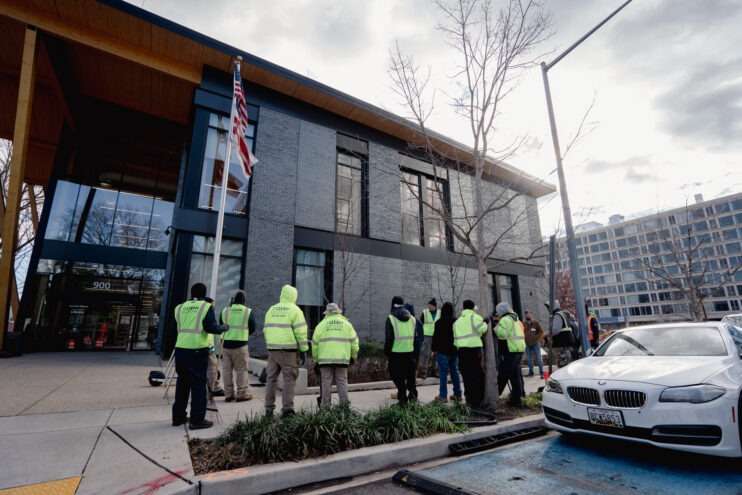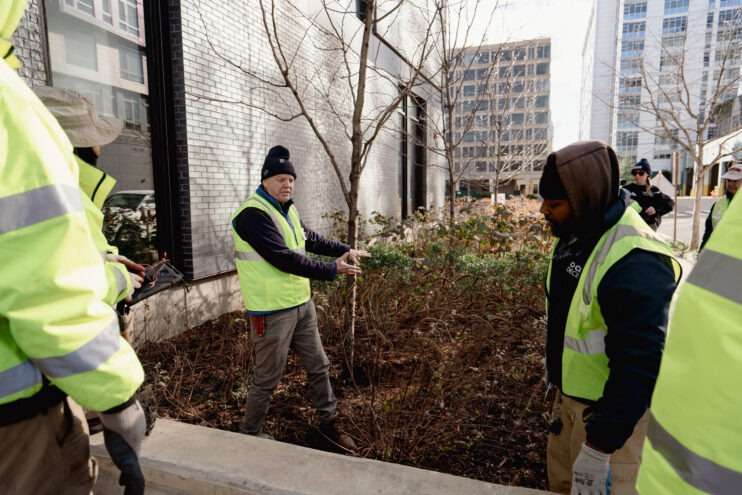
Landscaping crews gather outside a public library in SE DC for training on shrub pruning and inlet cleaning.
February 20, 2024
When we started this blog in June of 2020 it was based on the simple idea that we are much stronger when we work together, and in 2024 that is still a principal we firmly believe in. We recently had the opportunity to partner with the Alliance for the Chesapeake bay to create a series of trainings to specifically meet the needs of their DC maintenance contractors. Green Infrastructure Projects Manager with the Alliance, Jordan Gochenaur, wrote a blog post about this partnership. We appreciate the opportunity to share it with you!
–Katie Pinkham, CCLC Program Coordinator
The gardens in DC are dormant in January, but the landscape maintenance crews are not. Without weeds to pull or perennials to maintain, the crews can tackle larger maintenance tasks like mulching, cleaning out inlets, and pruning overgrown shrubs. This also means it is the right time to support landscaping crews by providing training on these important tasks.
People may think of landscaping crew jobs as “unskilled labor,” but this is inaccurate. To properly maintain Green Stormwater Infrastructure (GSI) practices like bioretention gardens or conservation landscaping, a crew needs to have in-depth knowledge of the life cycles of both native and non-native perennials, shrubs, and trees. On top of that, they need to have a strong understanding of how each green infrastructure practice works to ensure that the maintenance performed is enhancing that function and not hindering it.

Jason Swope of CCLC explains the function of a bioretention garden.
As part of the Alliance’s public GSI maintenance project in DC, we have partnered with the Chesapeake Conservation Landscaping Council (CCLC) to provide training for each of our contractors to help turn their crews into experts in green infrastructure. Training has evolved over the last several years as a result of the needs and feedback provided by the contractors. Currently, maintenance crew members are provided a four-part training series, offered in two languages, covering topics from an introduction to stormwater management to hands-on maintenance demonstrations.
Last fall, we brought on a fourth contractor with a predominantly Spanish-speaking crew. To ensure they receive the full benefit of the training sessions, we worked with CCLC to add a Spanish-speaking instructor to conduct the training in Spanish simultaneously with the English training. This new addition to training sessions reduces barriers for crew members whose first language is not English.


